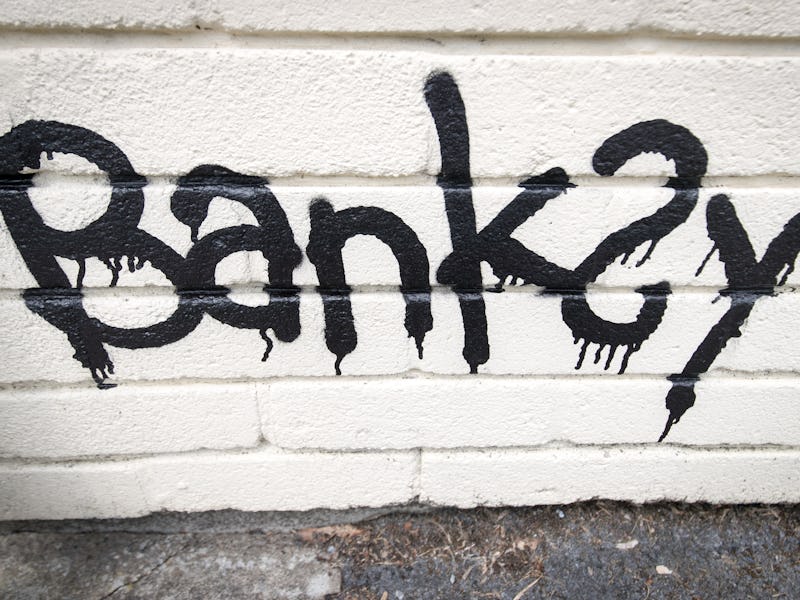Oi! If a new theory purporting to uncover the true identity of Banksy is true, it won’t just solve one of the greatest cultural mysteries of the past twenty years — it’ll also put the work of scientists to shame.
In March, researchers from the Queen Mary University of London published a study in the Journal of Spatial Science that identified the surreptitious street artist as one Robin Gunningham, a regular British dude long rumored to be the real Banksy. But now, a new theory proposed by an investigative journalist named Craig Williams provides compelling evidence that he is actually a founder of the trip-hop band Massive Attack. Where did the QMUL scientists go wrong?
In their paper, researchers used a technique known as geographic profiling to show that Banksy was actually Gunningham, proving a theory that had first been proposed in 2008. Using the model, normally used to catch criminals, they plotted the locations of 140 Banksy’s artworks on a map, then used the resulting “hot spots” to calculate the probability that he — the “offender” — resided in the area. Their data pointed to a pub, a football field, and several residential addresses in Bristol and London. Digging into publicly available information, they determined that Gunningham was a frequent visitor to all of these places and concluded that he’s been the artist’s secret identity all along.
A new theory proposes that Banksy is actually a founding member of the trip-hop band Massive Attack.
But now, Williams’ counter-theory threatens to debunk their academic analysis. In an argument he put forth in The Daily Mail, Williams draws a convincing correlation between the locations of Banksy’s artworks and venues where the band Massive Attack has played, which span several cities in North America and Europe. His analysis has led him to believe that Banksy is actually Robert Del Naja, one of the band’s founding members. Del Naja, whose band is famous for the songs “Teardrop” and “Unfinished Sympathy,” is known to be one of the original graffiti artists in Bristol, which is where Banksy is said to be based. Theorizing further, Williams suggests Banksy might be an entire crew of artists working with Del Naja.
Whether or not Williams is right, his analysis points to two assumptions that led the scientists’ research, however sound its methods, astray: They ignored Banksy’s international works of art, focusing only on Bristol and London, and they took for granted that Banksy is a single person and not a multi-armed entity.
It’s only fitting that the quest to find one of pop culture’s most deliberately subversive artists would confound the academic science community, which represents the wealthy, bourgeois institutions his work has long criticized. Banksy, we’re sure, would have it no other way.
